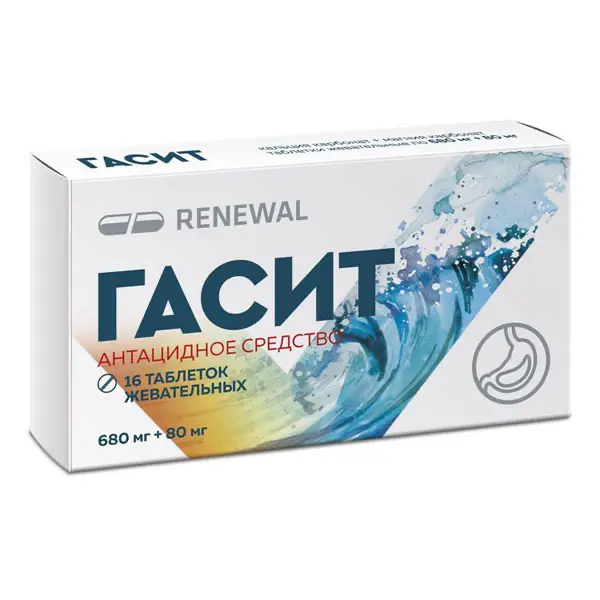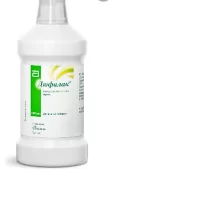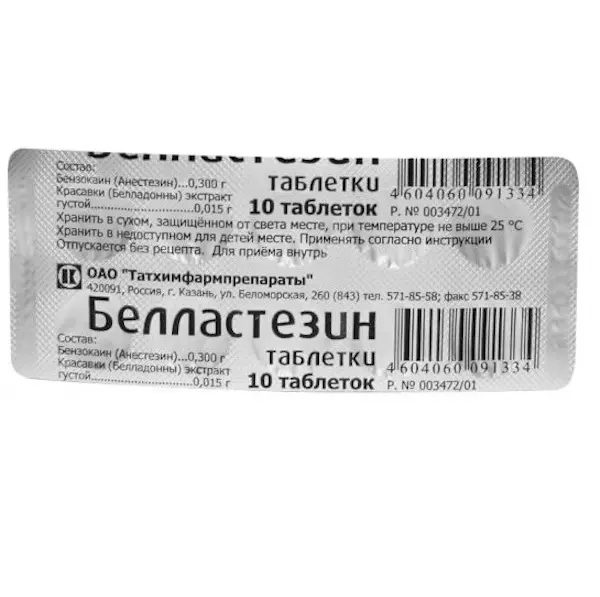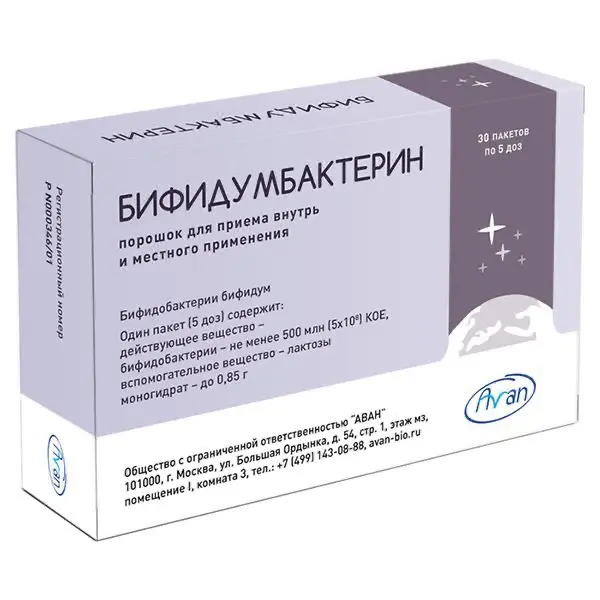Description
Pantoprazole Pharmacodynamics
Proton pump inhibitor (H+ K+ ATPase). Blocks the final phase of hydrochloric acid secretion regardless of the nature of the stimulus.
Pantoprazole is a substituted benzimidazole that suppresses hydrochloric acid secretion in the stomach by specific blockade of the proton pumps of the parietal cells.
Pantoprazole is transformed into its active form under acidic conditions in the parietal cells, where it inhibits the activity of the enzyme H+ K+ ATPase, that is, it blocks the final step of hydrochloric acid formation in the stomach.
The suppression of activity is dose-dependent and, as a result, both basal and stimulated acid secretion is reduced. Treatment with pantoprazole, as with other proton pump inhibitors and H2-receptor blockers, decreases gastric acidity and thus increases gastrin levels in proportion to the decrease in acidity. The increase in gastrin levels is reversible. Because pantoprazole binds the enzyme distally to the cell receptor, it can inhibit hydrochloric acid secretion independent of stimulation by other substances (acetylcholine, histamine, gastrin).
Serum chromogranin A (CgA) is also increased due to decreased hydrochloric acid secretion. Increased content of CgA may distort the results of diagnostic tests for neuroendocrine tumors.
Antisecretory activity
After first oral administration of 20 mg pantoprazole, gastric juice secretion is reduced by 24% after 2.5-3.5 hours and by 26% after 24.5-25.5 hours. After oral administration of pantoprazole once daily for 7 days, its antisecretory activity, measured 2.5-3.5 hours after administration, increases to 56% and after 24.5-25.5 hours to 50%. In duodenal ulcer associated with Helicobacter pylori, decreased gastric secretion increases the sensitivity of microorganisms to antibiotics. Does not affect the motility of the gastrointestinal tract. The secretory activity is normalized 3-4 days after the end of intake.
Compared with other proton pump inhibitors, pantoprazole has greater chemical stability at neutral pH, and less potential for interaction with the liver oxidase system, which depends on the cytochrome P450 isoenzyme system. Therefore, no clinically significant interactions have been observed between pantoprazole and many other drugs.
Indications
For the 20 mg dosage
– Treatment of mild symptoms of gastroesophageal reflux disease (such as heartburn, belching) in adults.
For dosage 40 mg
– Gastric and duodenal ulcer (in the acute phase), erosive gastritis (including those associated with taking nonsteroidal anti-inflammatory drugs (NSAIDs));
– Eradication of Helicobacter pylori in combination with antibacterial agents;
– Zollinger-Ellison syndrome.
Contraindications
– Hypersensitivity to pantoprazole and to any other component of the drug, as well as to substituted benzimidazoles;
– Dyspepsia of neurotic genesis;
– concomitant use of HIV protease inhibitors, such as atazanavir and nelfinavir, whose absorption is affected by gastric acidity (pH):
– Under 18 years of age;
– Pregnancy, breastfeeding.
Pregnancy and lactation:
Pregnancy .
Due to the lack of data on the use of pantoprazole in pregnant women, as a precautionary measure, the use of Pantoprazole during pregnancy should be excluded.
Breastfeeding period
Pantoprazole and its metabolites have been detected in breast milk.
The effect of Pantoprazole on neonates/infants is unknown. Pantoprazole is contraindicated during breastfeeding. If Pantoprazole should be used during lactation, breastfeeding should be discontinued.
Fertility
There are no data on the effect of Pantoprazole on fertility in humans. Preclinical studies have shown no effect on male or female fertility.
Dosage and administration
- Pantoprazole is taken orally before a meal, without chewing or crushing, with plenty of fluid.
- For a dosage of 20 mg
- The recommended dose is 20 mg per day.
- It may be necessary to take the drug for 2-3 days to achieve positive dynamics in elimination of symptoms, however, it may be necessary to use the drug for 7 days for complete elimination of symptoms. If the condition worsens during the first 3 days of treatment, it is recommended to consult a physician.
- The drug should be discontinued as soon as the symptoms disappear.
- Administration of the drug without medical consultation should not exceed 4 weeks. If within 2 weeks of continuous use of the drug positive dynamics is absent, it is necessary to consult a doctor.
- Pantoprazole should not be used for prophylaxis.
- No dosage adjustment is required for elderly patients and patients with renal or hepatic impairment.
- For a dosage of 40 mg
- Gastric and duodenal ulcer, erosive gastritis (including those associated with taking NSAIDs)
- Take 40-80 mg per day. The course of treatment is 2 weeks for exacerbation of duodenal ulcer, if this time is not enough, healing can usually be achieved during the next 2 weeks of therapy. The course of treatment is 4-8 weeks for exacerbation of peptic ulcer disease and erosive gastritis.
- Eradication of Helicobacter pylori (in combination with antibacterial agents)
- The following combinations are recommended:
- 1. Pantoprazole 40 mg 2 times a day + amoxicillin 1000 mg 2 times a day + clarithromycin 500 mg 2 times a day
- 2. Pantoprazole 40 mg 2 times a day + metronidazole 500 mg 2 times a day + clarithromycin 500 mg 2 times a day
- 3. Pantoprazole 40 mg 2 times a day + amoxicillin 1000 mg 2 times a day + metronidazole 500 mg 2 times a day.
- The course of treatment is 7-14 days.
- Zollinger-Ellison syndrome
- For long-term treatment of Zollinger-Ellison syndrome and other pathological hypersecretory conditions, therapy should be started with a daily dose of 80 mg. Then, if necessary, the dose can be increased or decreased, depending on gastric acidity values. Doses above 80 mg per day should be divided and used 2 times a day. A temporary increase in the dose of Pantoprazole above 160 mg is possible, but should not be continued longer than necessary to achieve control of acidity. The duration of treatment in the treatment of Zollinger-Ellison syndrome and other pathological hypersecretory conditions is not limited, and the duration of therapy may be determined according to clinical necessity.
- Special patient groups
- Impaired liver function
- In patients with severe hepatic dysfunction, the daily dose of Pantoprazole should not exceed 20 mg per day. Therefore, it is not recommended to use Pantoprazole at a dose of 40 mg in this group of patients. Hepatic transaminase activity should be monitored regularly during therapy with Pantoprazole, especially during long-term use. In case of increased “hepatic” transaminase activity, treatment should be discontinued.
- Renal dysfunction and use in elderly patients
- No dosage adjustment is required for elderly patients and patients with renal insufficiency.
- Due to the lack of data on the use of pantoprazole as part of combined antibiotic therapy against Helicobacter pylori in patients with renal impairment, as well as in patients with moderate and severe hepatic impairment, the drug should not be used.





